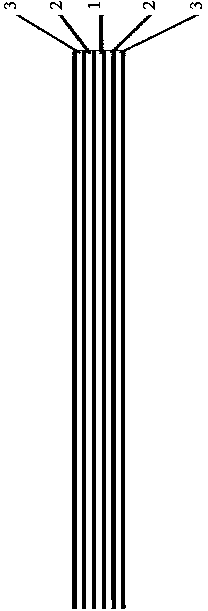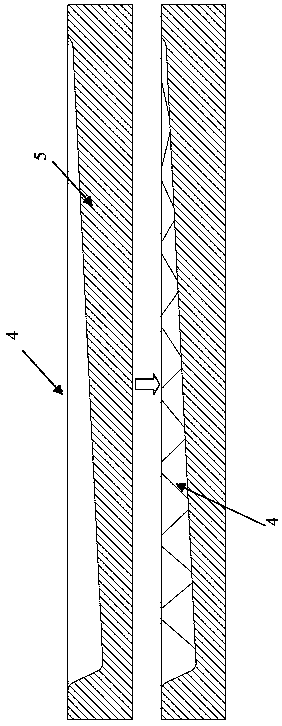Thin-walled three-layer hollow structure member and method for controlling surface groove defect
A hollow structure and surface control technology, applied in the field of titanium alloy manufacturing, can solve the problems of increased structural weight, complex process, and many processes, and achieve the effect of preventing local deformation and reducing surface grooves
- Summary
- Abstract
- Description
- Claims
- Application Information
AI Technical Summary
Problems solved by technology
Method used
Image
Examples
Embodiment Construction
[0029] The present invention will be described in further detail below in conjunction with the accompanying drawings and specific embodiments. It should be understood that the specific embodiments described here are only used to explain the present invention, not to limit the present invention.
[0030] As shown in the figure, a method for controlling surface groove defects of a thin-walled three-layer hollow structure includes the following steps,
[0031] 1) Degrease and clean the core board 1, outer skin 2 and sheath 3 panels to make the surface smooth and pollution-free, and the core board and outer skin meet the surface conditions required for diffusion connection; The two sides of the board 1 are coated with solder stop pattern, and the inner sides of the two wrappings 3 are respectively coated with solder stop;
[0032] 2) On both sides of the core plate, the outer skin 2 and the sheath 3 are sequentially superimposed, and the superimposed assembly 4 is welded around t...
PUM
 Login to View More
Login to View More Abstract
Description
Claims
Application Information
 Login to View More
Login to View More - R&D
- Intellectual Property
- Life Sciences
- Materials
- Tech Scout
- Unparalleled Data Quality
- Higher Quality Content
- 60% Fewer Hallucinations
Browse by: Latest US Patents, China's latest patents, Technical Efficacy Thesaurus, Application Domain, Technology Topic, Popular Technical Reports.
© 2025 PatSnap. All rights reserved.Legal|Privacy policy|Modern Slavery Act Transparency Statement|Sitemap|About US| Contact US: help@patsnap.com



